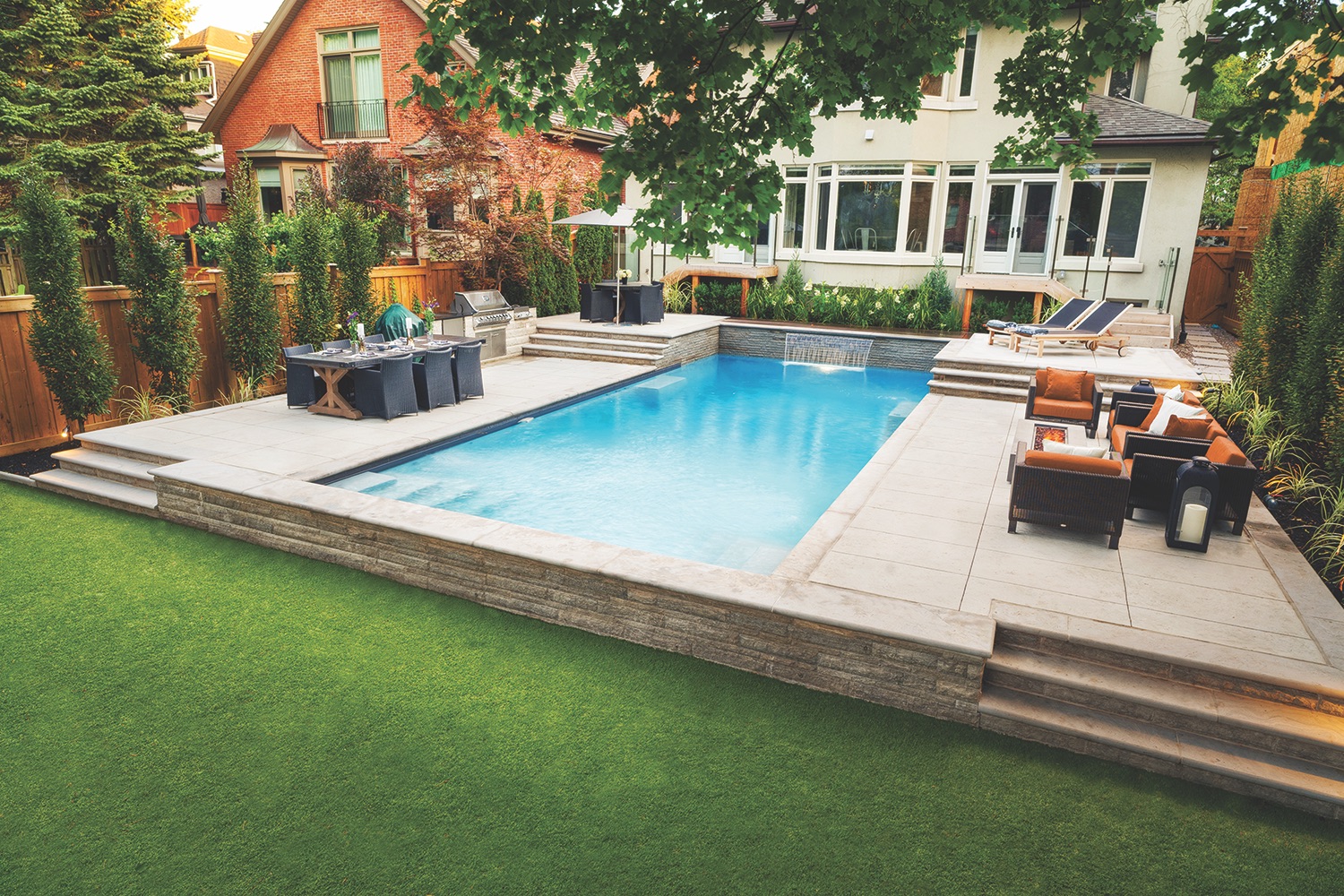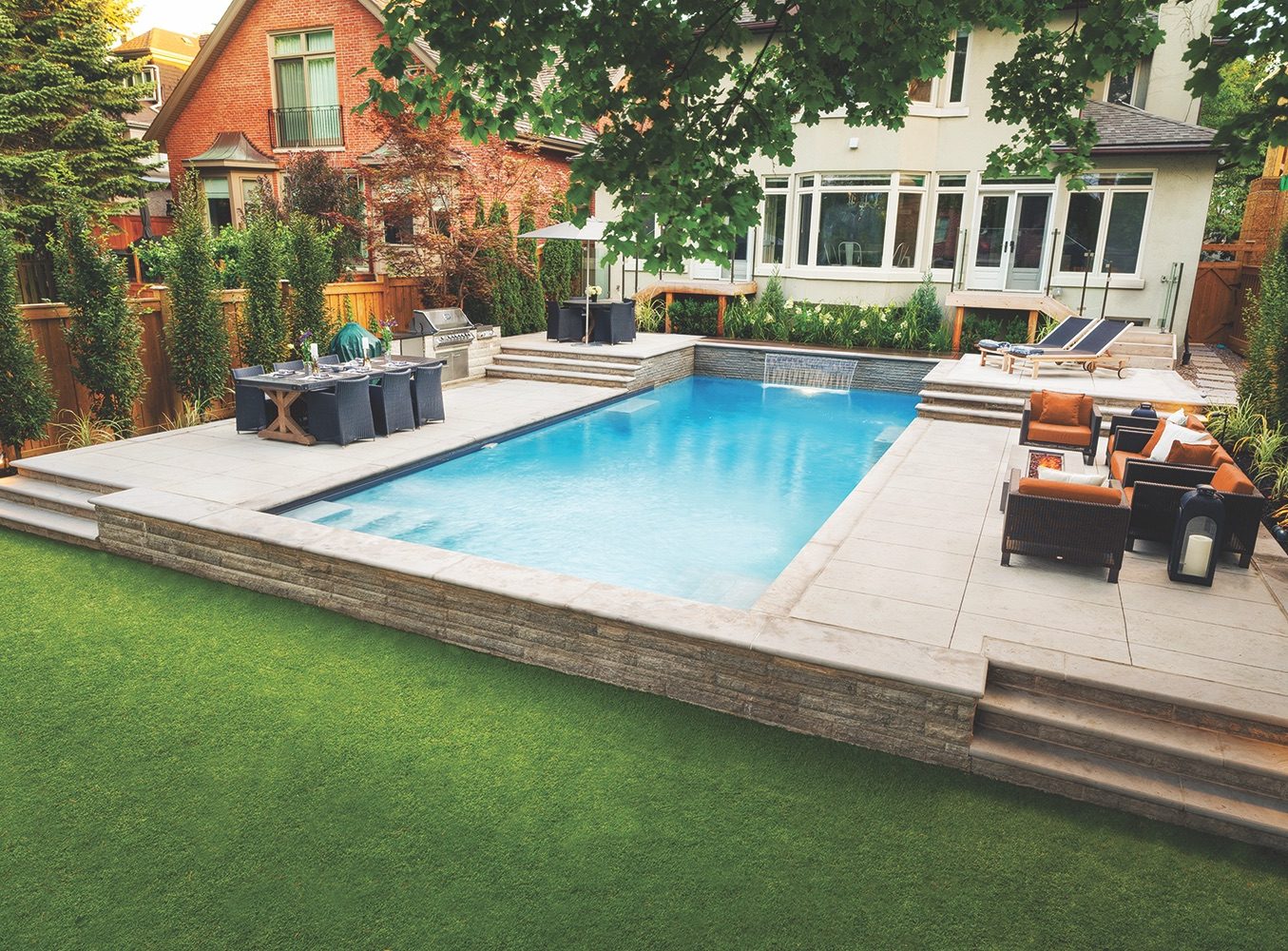HOW TO GET CONCRETE RESULTS
A primer on the use of a common building material to create a surface finish

Concrete is a practical and beautiful material that is abundant in the built world. Homeowners are aware of its useful properties that can enhance residential settings. Toronto Home asked Joe Guida, president of Patterned Concrete® Ontario Inc., for his insights into concrete and why it can be the perfect material for Canadian homeowners.
Q: Joe, what is a concrete finish?
A: A concrete finish refers to any type of surface that can be created on concrete. It ranges from a smooth trowel surface to a textured one or an acid wash. A concrete artisan can create a heavy, troweled texture or a polished one along with tones and colours.
Q: Canada’s climate is severe with extreme temperature swings. Doesn’t concrete crack in our freeze-and-thaw weather?
A: Concrete doesn’t need to be in a freeze-thaw region to crack. In our climate, the ground heaves due to frost and settles when it’s driven on, but in some instances, drastic heat changes can be worse in areas where there is no freezethaw. Concrete has proven itself all over the world because of its engineering capabilities and the reinforced version is the way to go. Concrete is composed of a mixture of sand, stone aggregates, cement and water. When it dries and hardens, the moisture is released and shrinkage or cracking can occur, and that can happen in warm climates just as it can in cold ones. We can control or eliminate cracking by designing or engineering concrete to perform where it is installed. Proper control/expansion joints are important as is reinforcing concrete and using the appropriate mixes.
Q: What kind of crack constitutes a bad crack?
A: A bad crack is one that does not allow the concrete to perform properly. It may create a hazard or deteriorate due to lateral movement. Cracks of this sort are usually the result of poor design and can be fixed by removing the affected portion of concrete and replacing it with new. The use of colour hardeners just on the surface will allow the colour to be matched even decades later. However, colouring concrete throughout will make repairs difficult to match.
Q: When can a crack be ignored?
A: A properly designed concrete slab may develop hairline cracks, which result from stresses that build up. However, they don’t open up or move laterally and are best ignored. In some cases, hairline cracks are better than control joints because they don’t curl or create other issues. Most are visible only after a rain because they take longer to dry than their adjacent flat surfaces. When designing a paving system used as a surface for walking or driving, the soil, drainage, loading and frost aspects should all be considered.
Q: How do cracks affect the longevity of a concrete installation?
A: “Properly designed” means that minor hairline cracks or stresses created by Mother Nature have been taken into consideration. While homeowners are upset when they inherit a crack in the first or second year after concrete is poured, it is amazing to speak to them 20 or 25 years later. They tell me that the concrete has held up amazingly well and the minor cracks that they experienced have not shifted or posed any problems at all. They simply wash their concrete down, seal it periodically as recommended, and love it. Most have had other paving systems in the past and do not regret choosing concrete.
Q: How much does a concrete finish cost?
A: Prices vary based on size, complexity and access (back vs. front of house). Expect prices to start at $14 to $15 per square foot and go up from there. However, there are many variables that can affect prices. When buying a concrete finish that can and should last a lifetime, the choice of contractor should be reviewed based on experience and the finish you are seeking.

